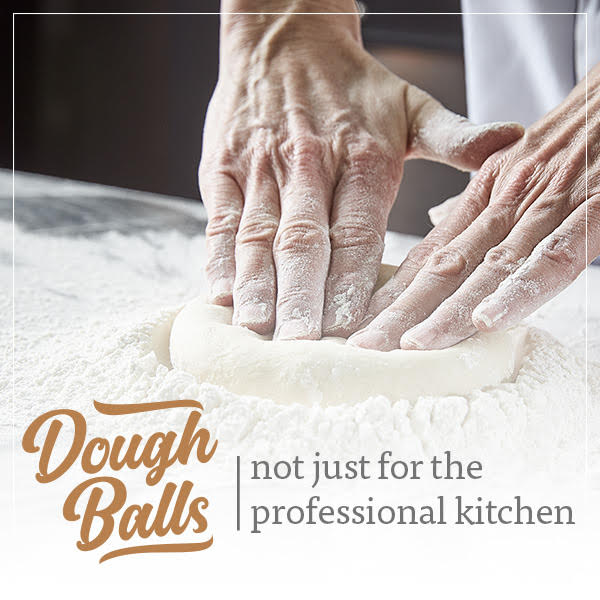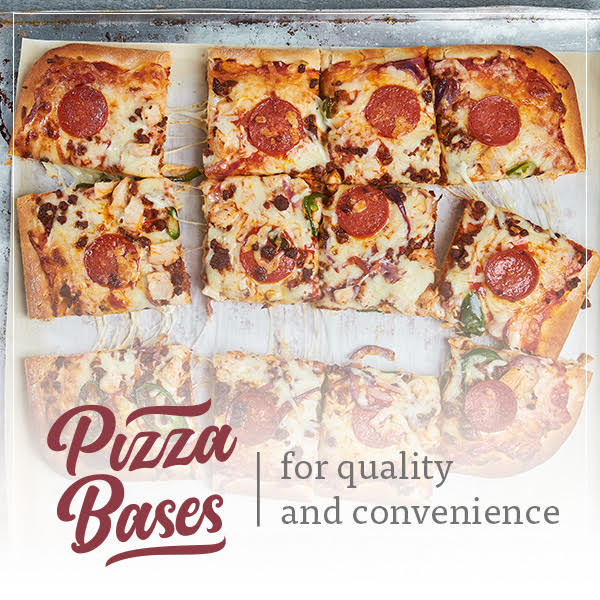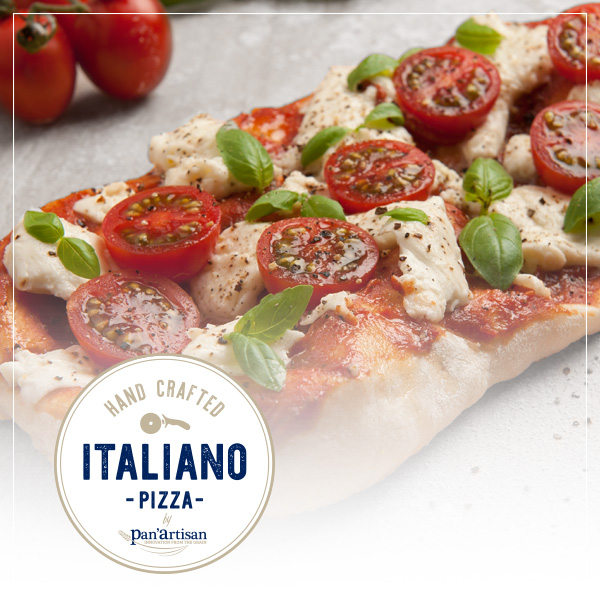Storage & Cooking – Gluten Free Pizza Bases
Storage
All gluten free pizza bases are supplied frozen. They can be stored in the freezer (-18°C) or refrigerator at less than 5°C. The shelf life frozen is six (6) months and chilled is three (3) weeks.
Ensure that storage is suitable so as to prevent cross contamination and gluten-containing ingredients are stored separately from gluten-free. If stored in the same area, gluten containing ingredients should be stored below gluten-free.
Defrost, preparation & cooking
Do not leave the bases to sit in the open air which will cause them to crack. They should remain covered at all times.
When the pizza base is removed from the carton / poly bag, it is critical to first close the poly bag and protect the remaining bases.
Ensure that a separate area is used when handling gluten-free pizza bases to prevent cross contamination.
Pizza bases should only be removed from the freezer and prepared at the time of order. At no time can the pizza bases be allowed to sit in an open environment.
Unused gluten-free foods should be clearly labelled and securely covered to allow easy identification for next shift.
Our gluten free pizza bases are designed to be topped immediately and should be cooked from frozen in a high temperature oven.
To serve gluten free pizzas both the base and the topping must be 100% gluten free.
Do not be alarmed if they do not lay flat, the base will flatten out once warmed, topped and placed in the oven.
Once the gluten free pizza is topped, place in the oven and bake until the cheese is bubbling and the base is golden brown (we recommend 245°C – 260°C for 8 – 12 minutes (temperature and time will depend on your oven and the toppings used).
Remove the pizza from the oven and, if serving cut, make sure you use a designated (colour coded), pizza cutter that is separate from other pizza cutters.
Some dos and don’ts for handling gluten free pizza bases
Gluten free pizza bases are very different to traditional wheat dough bases and require different handling and storage instructions.
Be aware of airborne flour. Pizza makers need to be aware of flour in the air as they’re tossing traditional dough.
If serving in an environment that also handles wheat and other gluten containing ingredients, please following these hints and tips for great tasting, gluten free pizza.
Re-seal partly used gluten-free ingredients and make sure they are correctly labelled before being returned to the store.
Gluten free pizza bases are prepared and baked in an oven pizza pan or on a designated pizza screen. This helps prevent any cross contamination to the bottom of the base during the topping and baking of the pizza.
Clean, dedicated utensils and equipment are used and the finished pizza is cut using a designated pizza cutter
Finished pizzas are served at the table in the pan or on dedicated plates.
Gluten-free foods supplied for consumption off the premises are clearly labelled as such.
Unused gluten-free foods are clearly labelled and securely covered to allow easy identification for next shift.
Staff wash hands before handling gluten-free ingredients.
Clean surfaces are used to prepare gluten-free pizza.
Spillage of gluten-containing ingredients are cleaned up to prevent cross contamination of gluten-free ingredients.
Spare aprons or protective clothing are available to staff if their apron or protective clothing become soiled with gluten-containing flour. Clothing should be regularly laundered.
Effective cleaning practices (hot water, detergents, rinsing) are used-Good hygienic food safety practices are in place to prevent cross contamination with gluten.
Make random tests to ensure that the finished gluten free pizzas are well below the allowable gluten level of 20 parts per million to be considered gluten.
As outlined above, every precaution is taken to prevent any cross contamination. However, because the Gluten Free pizza bases are prepared in an environment where flour is used, the chance of any cross contamination due to airborne flour does exist.




